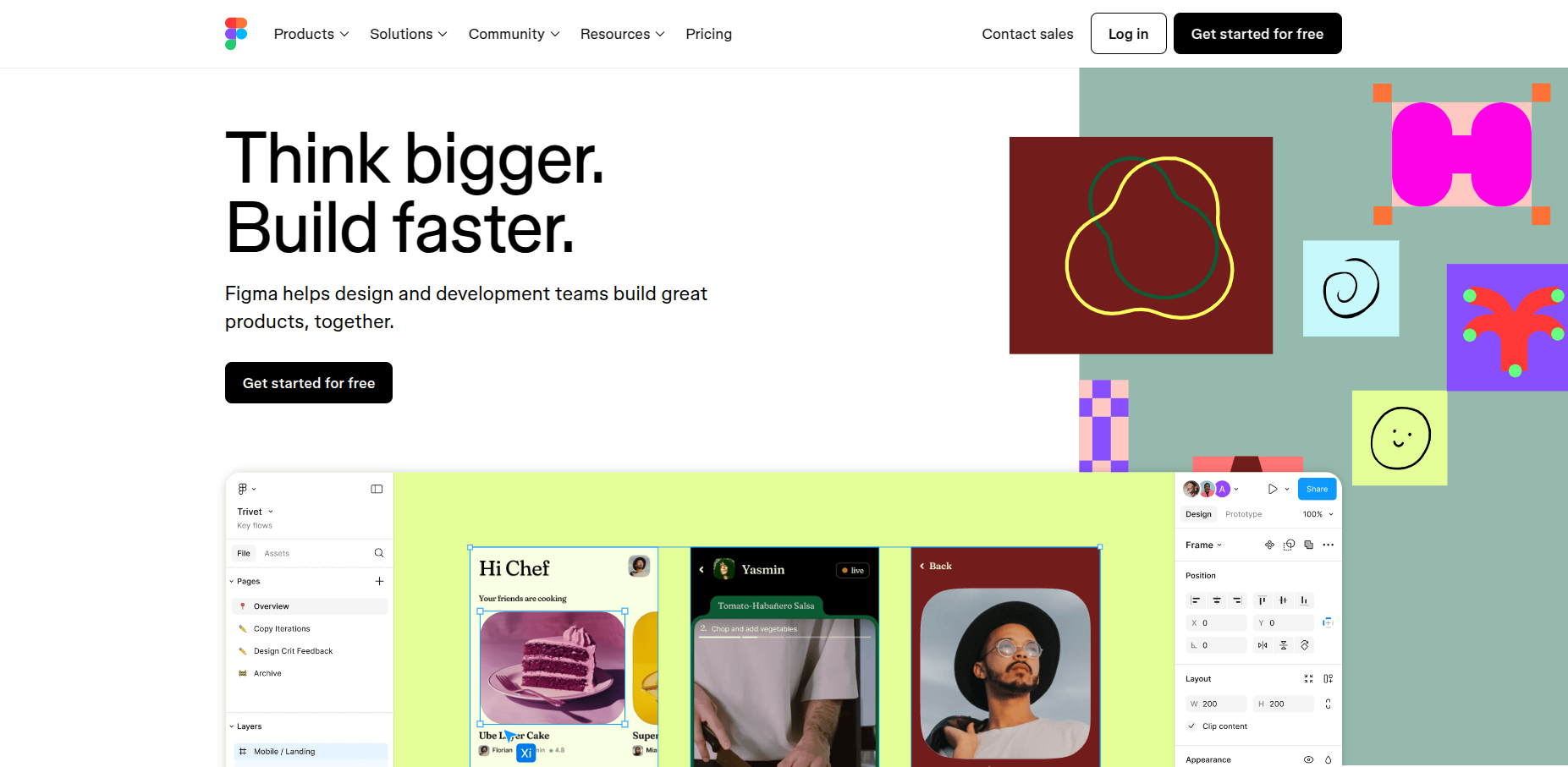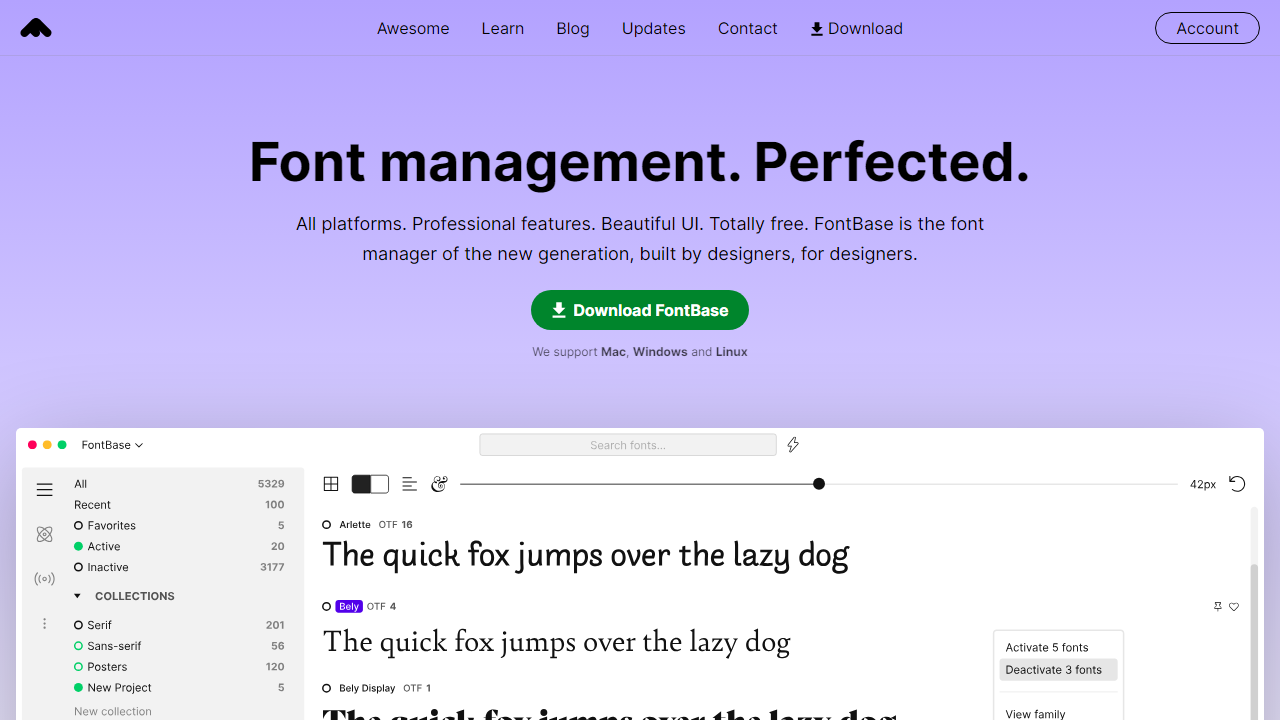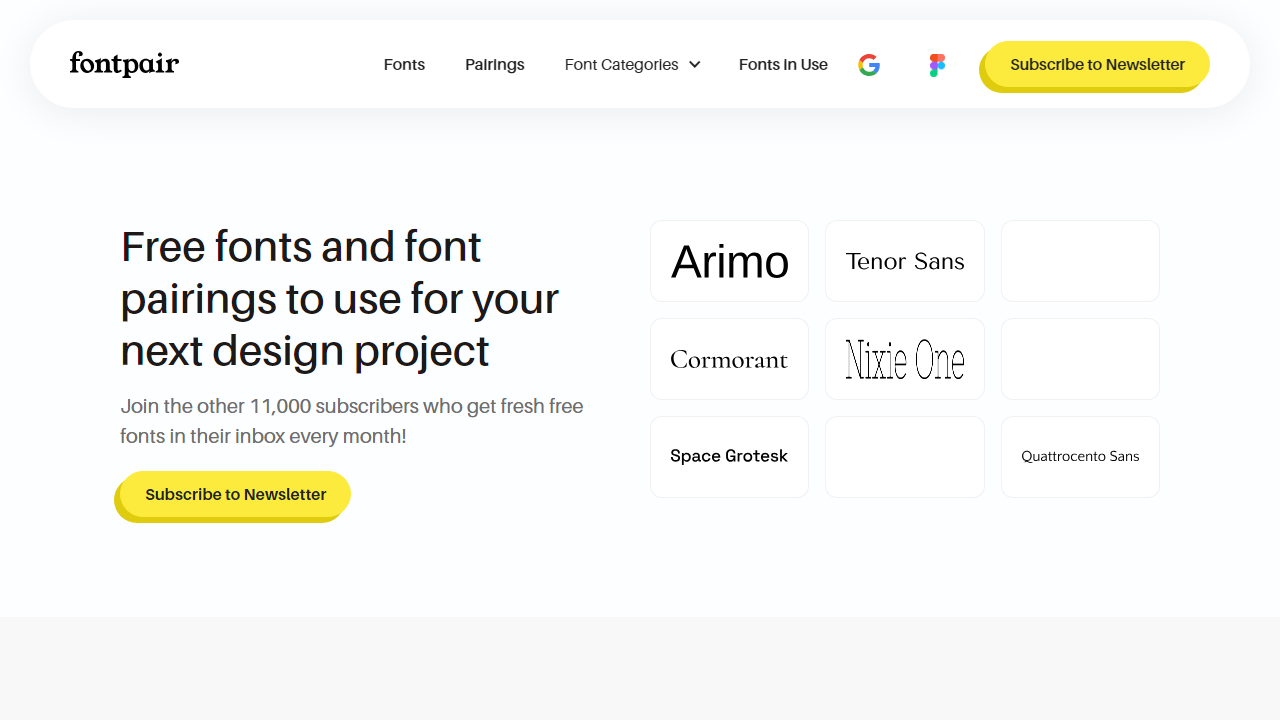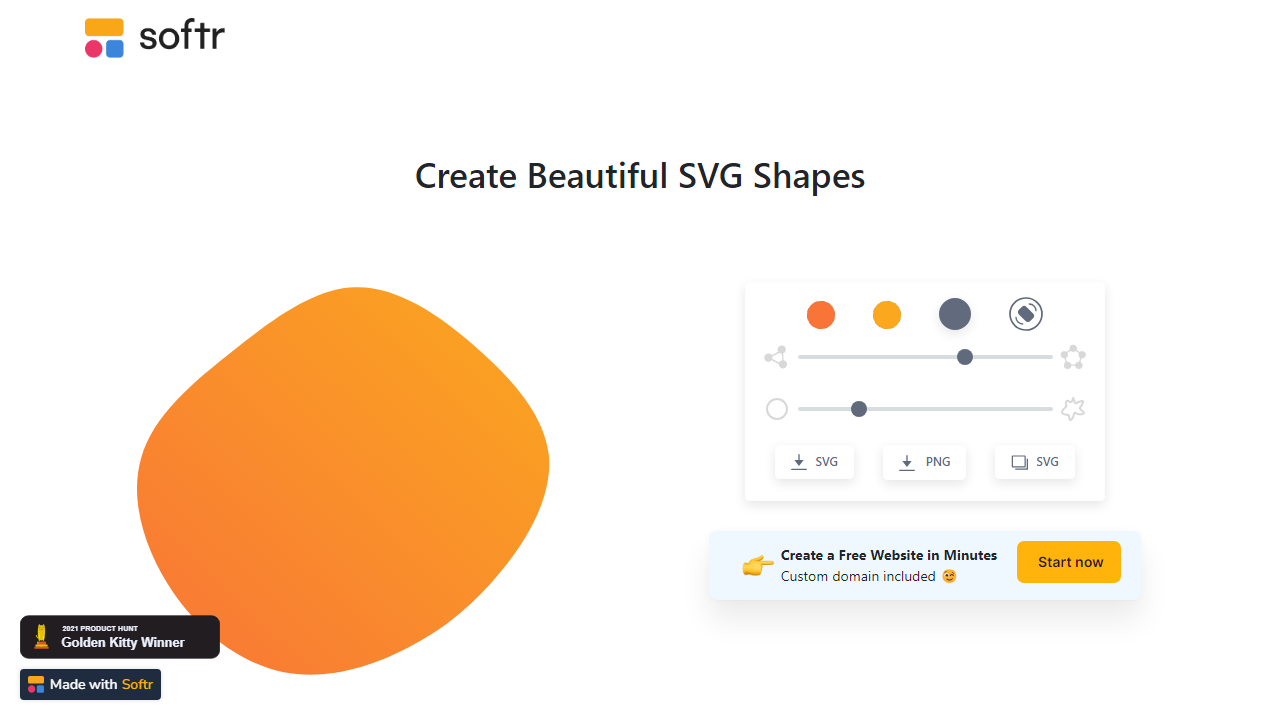Introduction
In the ever-evolving world of design, having the right tools can make all the difference. Two names consistently stand out in the creative industry: Framer and Figma. But which one reigns supreme? Which one is better suited for your specific needs?
This post dives into the heart of the Framer vs Figma debate. We’ll explore what makes each tool unique, comparing their strengths and weaknesses, ease of learning, and ideal use cases. By the end, you’ll have a clearer picture of which platform aligns best with your design aspirations.
Let’s get started!
What Is Framer Used For?
Framer is the go-to tool for designers looking to push the boundaries of interactivity. While capable of static designs, Framer truly shines when creating high-fidelity prototypes that feel real. Imagine building out a mobile app with functional animations, transitions, and even micro-interactions – that’s where Framer excels.
One of Framer’s key strengths is its seamless integration with code. Designers can use familiar languages like JavaScript and React to add a level of complexity and realism that goes beyond traditional design tools. This makes Framer ideal for:
- Sophisticated web and mobile app prototypes
- Interactive landing pages and marketing materials
- Advanced animations and micro-interactions
- Design systems with reusable components
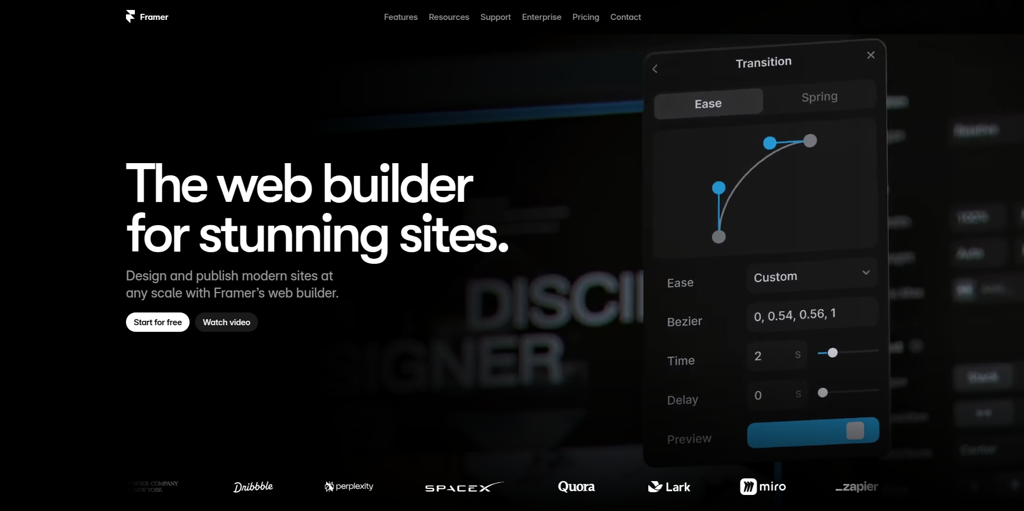
Framer empowers designers to bridge the gap between design and development, resulting in prototypes that are not only visually stunning but also incredibly functional.
What Is Figma Used For?
Figma has taken the design world by storm, quickly becoming a favorite for UI/UX design and prototyping. Its magic lies in its cloud-based nature, making collaboration seamless and intuitive. Imagine multiple designers working on the same project simultaneously, seeing each other’s changes in real time – that’s the power of Figma.
Beyond real-time collaboration, Figma boasts a robust set of features for:
- Designing user interfaces and user experiences
- Creating interactive prototypes
- Building design systems with shared libraries
- Generating design specifications for developers
Figma’s intuitive interface, coupled with its collaborative features, makes it a versatile tool for design teams of all sizes. Whether you’re crafting a website, mobile app, or even a social media graphic, Figma streamlines the design process from start to finish.
Similarities Between Framer and Figma
While Framer and Figma each have their own strengths, they share some fundamental similarities that make them both powerful design tools:
1. UI/UX Design and Prototyping: Both platforms excel at crafting visually appealing and functional user interfaces and user experiences. You’ll find tools for creating wireframes, mockups, and interactive prototypes that bring your design ideas to life.
2. Range of Design Tools: From vector editing and typography to shape manipulation and masking, Framer and Figma offer a comprehensive suite of design tools. Whether you’re a seasoned professional or just starting out, you’ll find the tools you need to create stunning visuals.
3. Interactive Design Capabilities: Both platforms allow you to go beyond static designs and add a layer of interactivity. Create animations, transitions, and micro-interactions to simulate how users will interact with your designs.
4. Collaboration Features (to varying degrees): While Figma is renowned for its real-time collaboration, Framer also offers collaborative features, albeit with some limitations. You can share your projects with others for feedback or work together on designs, though real-time editing might not be as seamless.
The key takeaway is that both Framer and Figma provide a robust foundation for UI/UX design and prototyping. The best choice for you will depend on your specific needs and priorities.
Differences Between Framer and Figma
While both tools inhabit the same design ecosystem, key differences set Framer vs Figma apart:
1. Core Focus:
- Framer: Emphasizes high-fidelity prototyping and advanced interactions. It’s ideal for designers who want granular control and realism in their prototypes, often blurring the lines between design and development.
- Figma: Prioritizes UI/UX design, collaboration, and a streamlined workflow. It’s perfect for teams working together on design systems, user flows, and interactive prototypes, though with less emphasis on complex animations.
2. Code Integration:
- Framer: Offers deep code integration, allowing designers to use JavaScript and React to build complex interactions and functionalities. This appeals to designers comfortable with coding or those working closely with developers.
- Figma: While Figma supports basic interactions, it doesn’t offer the same level of code integration as Framer. Its strength lies in its visual design tools and collaborative features.
3. Learning Curve:
- Framer: Can have a steeper learning curve, especially for designers new to code or advanced prototyping concepts. However, its powerful features can be incredibly rewarding for those willing to invest the time.
- Figma: Generally considered more beginner-friendly with an intuitive interface and a vast library of resources. Its ease of use makes it a popular choice for designers of all levels.
4. Pricing:
- Framer: Offers a free plan with limited features and paid plans for individuals and teams.
- Figma: Provides a generous free plan for individual users and paid plans for teams with more extensive collaboration and design system features.
Understanding these key differences can help you determine whether Framer or Figma aligns better with your design workflow, team structure, and project requirements.
Which Is Easier to Learn: Figma or Framer?
When it comes to ease of learning, Figma generally takes the lead. Its intuitive interface, drag-and-drop functionality, and extensive library of tutorials and documentation make it incredibly beginner-friendly. Even designers with limited experience can quickly grasp the basics and start creating.
Framer, while incredibly powerful, can present a steeper learning curve, especially for those new to code or advanced prototyping concepts. Its interface, while well-designed, might feel more complex to navigate initially. That said, Framer has made significant strides in improving its onboarding experience and offers a growing collection of resources to help users get up to speed.
Here’s a quick breakdown:
Figma:
- Pros: Intuitive interface, vast learning resources, large and active community
- Cons: Limited code interaction capabilities
Framer:
- Pros: Powerful prototyping features, seamless code integration
- Cons: Steeper learning curve, may require coding knowledge for advanced features
Ultimately, the best tool for you depends on your learning style, prior design experience, and willingness to invest time in mastering new skills. If you’re a complete beginner, Figma’s ease of use makes it a great starting point. However, if you’re comfortable with coding or eager to dive into the world of high-fidelity prototyping, Framer’s learning curve might be well worth the effort.
Recommendations Based on Usage
In the battle of Framer vs Figma, there’s no one-size-fits-all winner. The best tool for you ultimately boils down to how you plan to use it. Let’s break down some common scenarios:
Choose Framer if:
- High-fidelity prototyping is paramount: You need prototypes that look and feel like the real deal, complete with intricate animations, transitions, and micro-interactions.
- Code integration is crucial: You’re comfortable working with code (JavaScript, React) or need to create prototypes that bridge the gap between design and development.
- You’re creating complex interactions: Your designs involve advanced animations, data visualizations, or unconventional user experiences.
Choose Figma if:
- Collaboration is key: You need a tool that allows for seamless real-time collaboration, especially for teams working remotely.
- UI/UX design is your primary focus: You’re designing user interfaces, user flows, and interactive prototypes for websites, mobile apps, or other digital products.
- Ease of use and learning curve matter: You want a tool that’s intuitive and easy to pick up, even for designers with limited experience.
Consider a hybrid approach:
- Some designers find value in using both tools, leveraging Figma’s collaborative features for initial design and then moving to Framer for high-fidelity prototyping.
Ultimately, the best way to decide is to experiment with both Framer and Figma. Take advantage of their free trials, explore their features, and see which platform feels more intuitive and aligned with your workflow.
Pros and Cons
To wrap up our Framer vs Figma comparison, let’s look at their strengths and limitations side-by-side:
Framer
Pros:
- High-fidelity prototyping: Unmatched capabilities for creating realistic and interactive prototypes.
- Code integration: Seamless integration with JavaScript and React for advanced functionality.
- Powerful animation tools: Create smooth and sophisticated animations with ease.
- Strong community: Growing community of passionate designers and developers.
Cons:
- Steeper learning curve: Can be challenging for beginners, especially those unfamiliar with code.
- Less collaborative: While it offers collaboration features, it’s not as seamless as Figma’s real-time approach.
- Pricing: Can be more expensive, especially for larger teams.
Figma
Pros:
- Ease of use: Intuitive interface and drag-and-drop functionality make it easy to learn and use.
- Real-time collaboration: Seamless collaboration for teams of all sizes.
- Versatile design tools: Wide range of features for UI/UX design, prototyping, and more.
- Large community and resources: Extensive library of tutorials, plugins, and design resources.
- Affordable pricing: Generous free plan and competitive paid plans for teams.
Cons:
- Limited code integration: Lack of advanced code interaction capabilities compared to Framer.
- Less powerful for complex animations: While capable of animations, it might not be as robust as Framer for intricate animations.
By weighing these pros and cons, you can make an informed decision about which tool aligns better with your needs and priorities.
So, Which Is Better: Figma or Framer?
The ultimate battle cry of “Framer vs Figma: Which is better?” doesn’t have a simple answer. It’s like comparing a race car to a reliable SUV – both excel in their own right.
Figma emerges as the champion for:
- Teams prioritizing collaboration: Its real-time features are unmatched, making it ideal for remote teams or projects requiring constant feedback.
- Designers seeking an intuitive tool: The learning curve is gentle, allowing for quick onboarding and a smooth workflow.
- UI/UX design as the core focus: Figma excels at crafting interfaces, user flows, and prototypes for a range of digital products.
Framer, on the other hand, claims victory when:
- High-fidelity prototyping is non-negotiable: The ability to create prototypes that feel incredibly close to the final product is unmatched.
- Code integration is a must: For designers comfortable with code or projects demanding intricate interactions, Framer provides the tools.
- Pushing creative boundaries is a priority: When standard animations won’t cut it, Framer gives you the power to think outside the box.
The Bottom Line:
- If you value ease of use, collaboration, and robust UI/UX design capabilities, Figma is an excellent choice.
- If you prioritize high-fidelity prototyping, code integration, and pushing the limits of interactivity, Framer is the way to go.
The good news? Both platforms offer free trials. Test drive each one to see which feels like a better fit for your individual design style and project needs. You might even discover that a hybrid approach, using Figma for initial design and Framer for advanced prototyping, works best!
FAQs
Still have some questions about the Framer vs Figma showdown? Let’s address some common queries:
1. Can I import Figma designs into Framer?
Yes! Framer has a dedicated import feature for Figma, allowing you to seamlessly bring your designs over for prototyping.
2. Do I need coding knowledge to use Framer?
While you can achieve a lot in Framer without coding, unlocking its full potential often involves JavaScript or React. However, Framer is continuously improving its no-code capabilities.
3. Is Figma suitable for animation-heavy projects?
Figma can handle basic to intermediate animations. However, if your project demands complex, highly-customized animations, Framer might be a better choice.
4. Which tool is better for individual designers on a budget?
Both Framer and Figma offer generous free plans for individual users. Figma’s free plan might be slightly more feature-rich for solo designers.
5. Can I use Framer or Figma offline?
Figma is primarily cloud-based and requires an internet connection for most features. Framer offers both a web-based and a desktop app (for macOS) that allows for offline work.
6. Which tool integrates better with other design tools and platforms?
Figma boasts a wider range of integrations with other tools and plugins, enhancing its collaborative and workflow capabilities.
7. What kind of support can I expect from Framer and Figma?
Both companies provide comprehensive documentation, tutorials, and active community forums. Paid plans often come with dedicated support channels.
